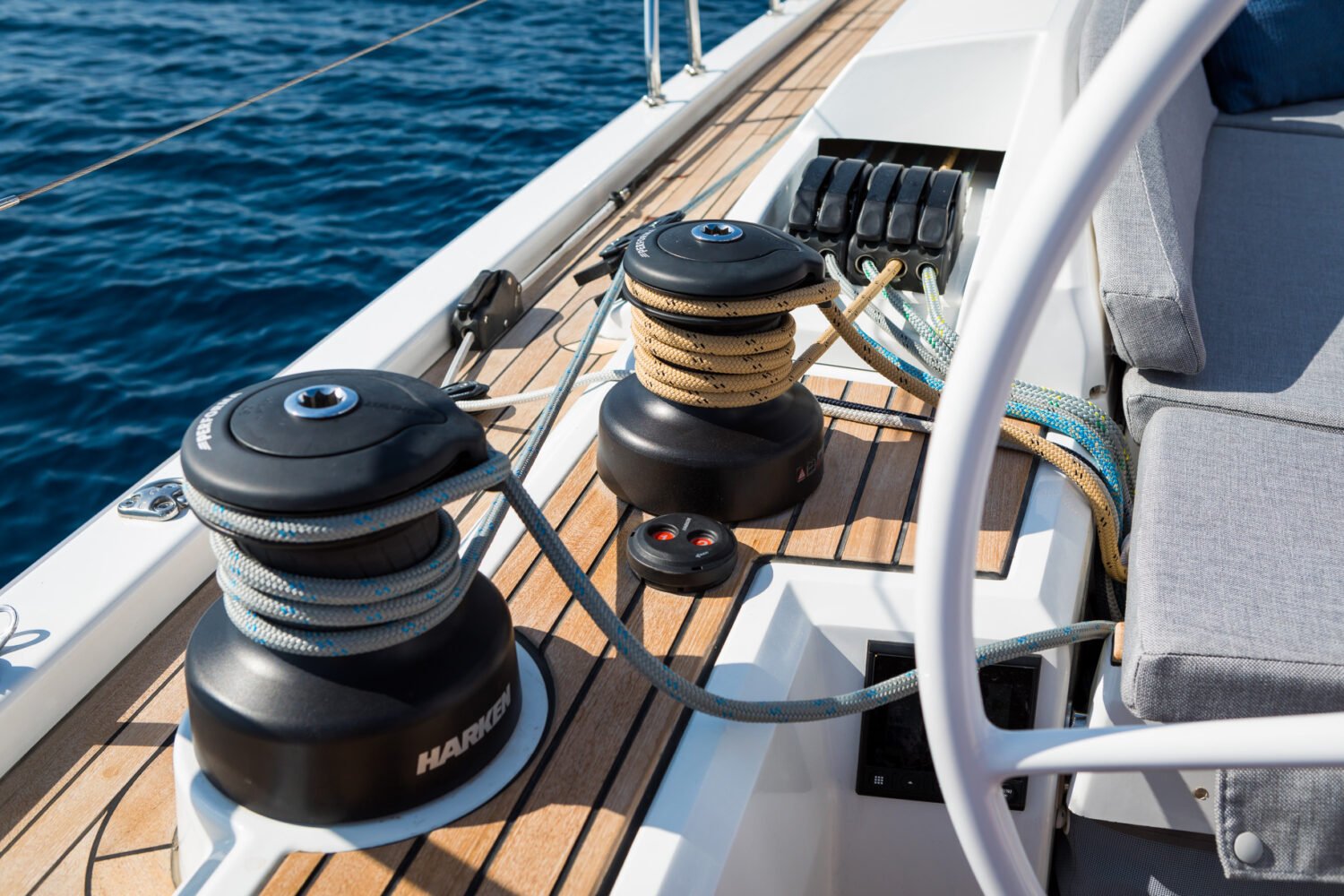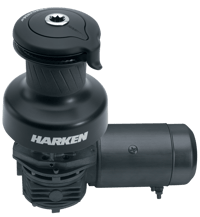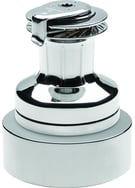
© Beneteau
Published Date: October 1 2024
Electric winches are becoming increasingly common. Used to reduce the strain of trimming and hoisting sails, electric winches make sailing more accessible; with strength no longer a barrier, it’s easy to sail short-handed or with minimal crew, share sailing with family and friends, plus prolong your time on the water for years to come.
When choosing an electric winch, there are four main factors to consider: speed (1, 2 or 3), motor placement, drum material and size. In this blog, we'll focus on size.
Specifying the size of an electric winch is much like specifying a manual winch. The main considerations are application and load.
Replacing a Manual Winch
If you are replacing a manual winch already onboard, it is likely you already have a good idea of the winch size you need. You can replace a size 40 manual winch with a size 40 electric winch, for example. If this is the case - and if your winch gears and internal workings still have plenty of life left - using a conversion kit to simply convert your manual winch to an electric winch could be a cost and time-effective option worth exploring. However, if you're winch is old and tired a full replacement will be more advantageous.
If you’re after a little more oomph, it is also common for sailors to size up, choosing an electric winch that is one size larger than the winch it will replace. However, be careful not to size up more than this – otherwise, you risk surpassing the break load of the rest of your deck hardware.
Although tempting as an initial cost saving, fitting an electric winch that is too small or not up to the job will result in higher costs long term, increasing the risk of motor failure, as well as reducing performance onboard with slower winching. This will result in more wear and tear, as your sails will be flapping longer. It’s also important to remember that an electric winch operates as a manual winch in case of power failure, so the manual gears need to be up to the job.
Starting from Scratch
If you’re starting from scratch with a new-build boat or going for a complete winch overhaul there are some rules to follow.
An electric winch needs to be sized for its greatest load. For example, if the winch will be used to trim the genoa and main halyard, ensure the winch is sized for the genoa as this is the greatest load.
To work out how this correlates to electric winch size, many winch manufacturers supply useful reference tables, weighing up the size of the boat, sail area and projected loads. These can be found in our ‘Download Centre’ for all our electric winch brands. Just search 'Winch Selection Guide'.
Motor Placement
When purchasing a new electric winch, you will also need to consider the placement of the motor: horizontal or vertical. This will largely depend on the configuration of your boat and the space available below deck in the cabin headroom.
As the name suggests, the motor for a ‘horizontal’ electric winch sits below deck, at a horizontal angle.

Alternatively, the 'vertical' configuration sits below deck, at a vertical angle.

Some manufacturers, such as Harken & Andersen, also offer compact options. These models feature a lower profile, with the motor partially embedded in the drum.

Andersen also offer an 'above deck' option, taking up no cabin headroom at all.

Other Considerations – Voltage & Batteries
Whether you are replacing a manual winch or installing a new winch system, an additional point of concern when choosing an electric winch is your boats electrical system. It is important to know your boat's voltage – 12V or 24V. Some older boats pre-2000 have a 24V system, whilst lots of newer boats have a 12V system. If you don’t know, ask an electrician to have a look.
Batteries are another important element – how many batteries does your boat have, and what's their capacity? Electric winches use more amp-hours than basic navigation instruments. If you are running a large number of electronics onboard, measure the amp-hours used for each electrical device per charging period plus the projected amp-hours for your new electric winches.
Decide if your batteries have enough capacity. Harken recommend that for optimal battery life, your battery should be three times the daily draw. For example, if the electrical draw is 100 amp-hours per day, you will need 300 amp-hours of battery capacity.
Whilst some smaller boats - without generators - do install batteries specifically for their electric winches, best practice is a bank of batteries to charge all your electrical components. This set-up facilitates a slow draw from a large electrical supply, which is ideal for optimal battery performance.
Conclusion
- If you’re replacing a manual winch, go for the same size (consider a conversion kit) or one size up
- If you’re starting from scratch, size the electric winch for its highest load and use the tables in our Download Centre to specify
- Check whether your boats electrical system is 12V or 24V
- Assess battery capacity
If you have any questions about electric winches, please feel free to email us at support@upffront.com, or click the link below to see our full range:



